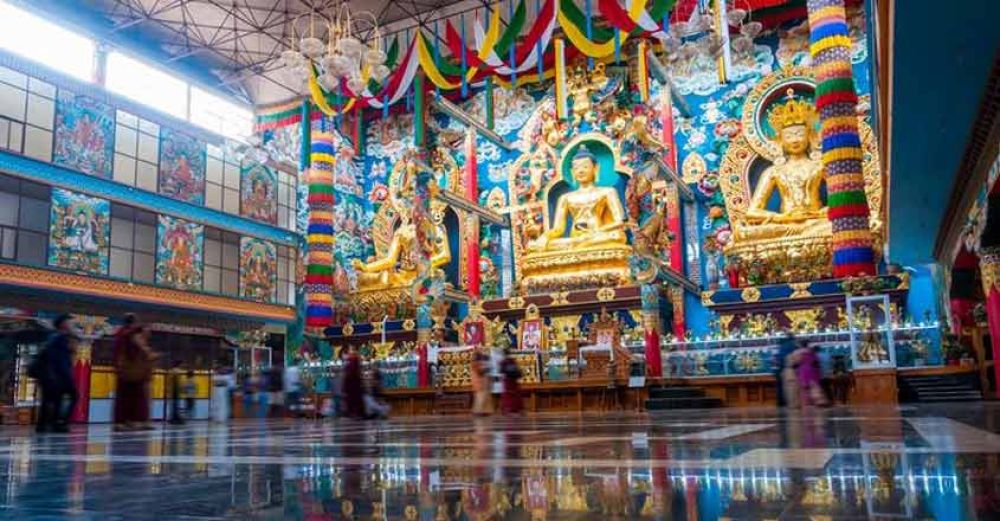

Bylakuppe, located in the Kodagu district of Karnataka, is the second-largest Tibetan settlement outside Tibet, boasting a vibrant culture and history. Tourism in Bylakuppe has grown significantly since the establishment of the Namadroling Monastery in 1963.
The Namadroling Monastery, also known as the Golden Temple, was established by Drubwang Padma Norbu Rinpoche shortly after the Tibetan Diaspora in the 1960s, when the Tibetan refugees were settled by the Government of India in Bylakuppe. This monastery has since grown to become one of the largest teaching centers of the Nyingmapa, a lineage of Tibetan Buddhism.
With the establishment of Namadroling Monastery, Bylakuppe began to attract tourists, scholars, and Buddhist practitioners from around the world. The allure of witnessing Tibetan culture, religion, and artforms in India pulled curious travelers to this small town. Initially, tourism was mainly driven by Buddhism enthusiasts and cultural explorers.
The intricate architecture and the elaborate ceremonies at Namadroling Monastery offer visitors a glimpse into Tibetan spiritual practices. The annual Tibetan New Year celebration, known as Losar, and other Buddhist festivities draw substantial crowds. The highlight of the monastery complex is the Golden Temple, which houses three majestic gold-plated statues of the Buddha.
Tourism has bolstered Bylakuppe's local economy, providing income through homestays, restaurants, and shops selling Tibetan crafts and souvenirs. The influx of visitors has led to the development of infrastructure and amenities catering to tourists.
Recent trends show increased interest in immersive cultural experiences, with tourists engaging in community-run programs and longer stays. Visitors are keen on understanding the Tibetan way of life, cuisine, crafts, and participating in meditation sessions. There is also a heightened focus on sustainable and responsible tourism.
In summary, the tourism history of Bylakuppe has progressed considerably since the founding of the Namadroling Monastery. Its rich cultural tapestry provides a unique window into Tibetan culture and spirituality away from its homeland, casting Bylakuppe not just as a site of religious significance but also as a distinctive destination for international and domestic travelers.